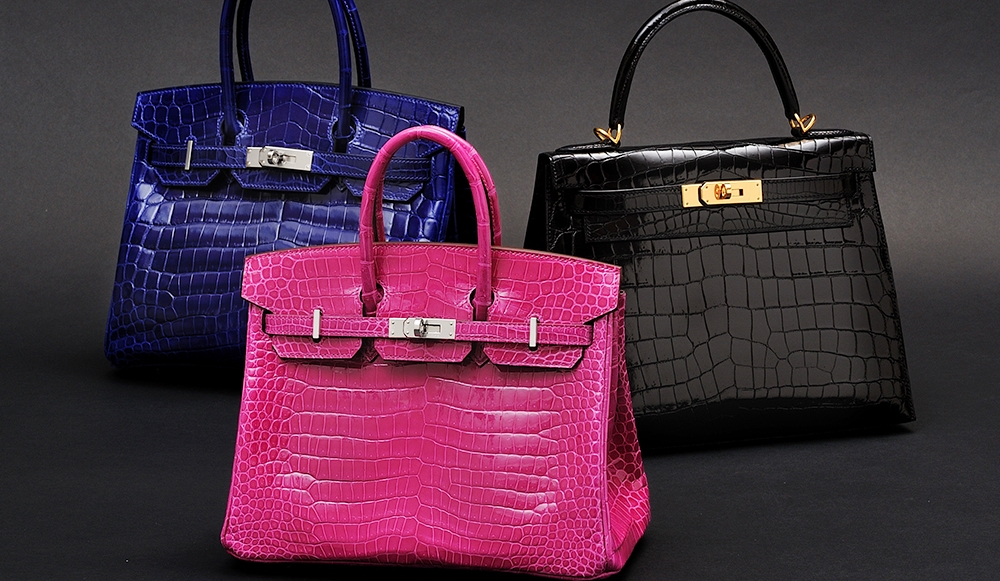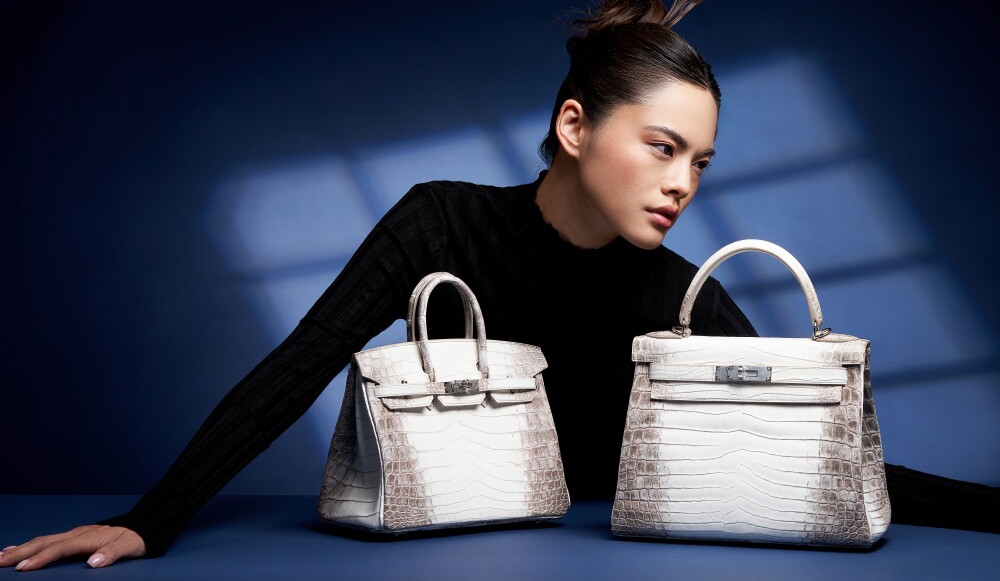The Guide to Hermès Leathers
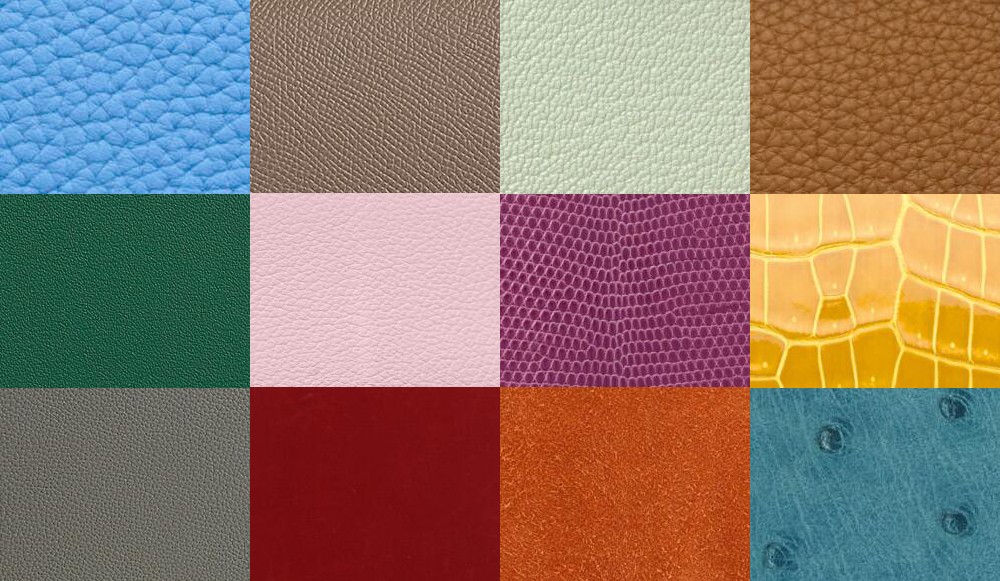
Hermès has positioned itself as a frontrunner in the luxury industry by implementing a distinct and exceptional leather goods strategy. Setting itself apart from competitors, the brand places emphasis on creating premium leather accessories while minimizing the production of more affordable canvas products. Hermès upholds the value of traditional manufacturing methods, ensuring that their highly skilled artisans hand-stitch bags with meticulous attention to detail, rather than relying on mass production techniques. By prioritizing craftsmanship and quality over efficiency, Hermès maintains its unique identity and reinforces its commitment to delivering exquisite leather goods to discerning customers.
Hermès is renowned for its meticulous craftsmanship and attention to detail, which is reflected in the extensive variety of 32 different leathers used in the production of their iconic bags. Each leather possesses its own distinct characteristics, ensuring a diverse range of options for customers. From the smooth and supple Togo leather to the elegant and exotic alligator skin, Hermès showcases an unparalleled selection of materials. The brand's dedication to sourcing the highest quality leathers, combined with their expert tanning and finishing techniques, results in luxurious and durable bags that stand the test of time. With such a wide array of leathers to choose from, Hermès offers a truly personalized and exceptional experience for their discerning clientele.
Hermes Canvas
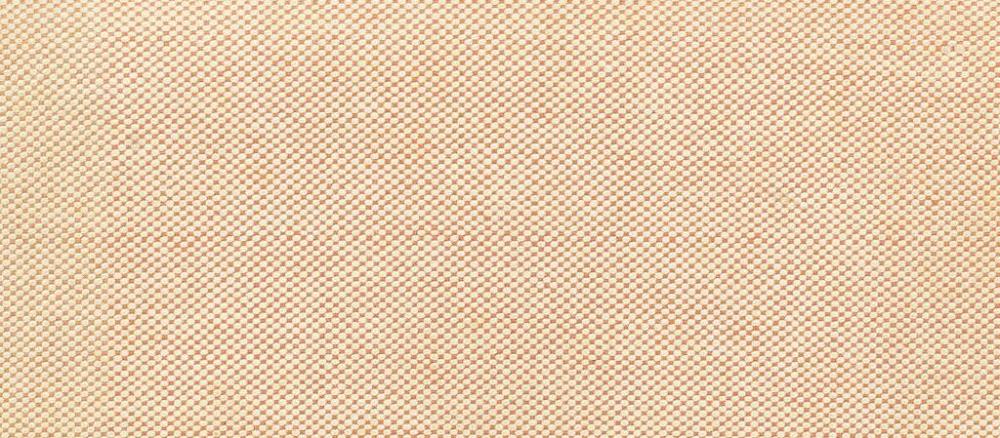
Canvas differs from other leathers immensely. In fact, Canvas isn’t even a true leather; it’s actually an incredibly sturdy and durable cloth. However, in the world of Hermes fashion, canvas is treated and combined with several other leathers to create a strong exterior that can withstand just about anything. You’ll find canvas on many of their bags, one of the most popular being the Hermes Herbag which is made up almost entirely of Canvas material.
Taurillon Clemence leather
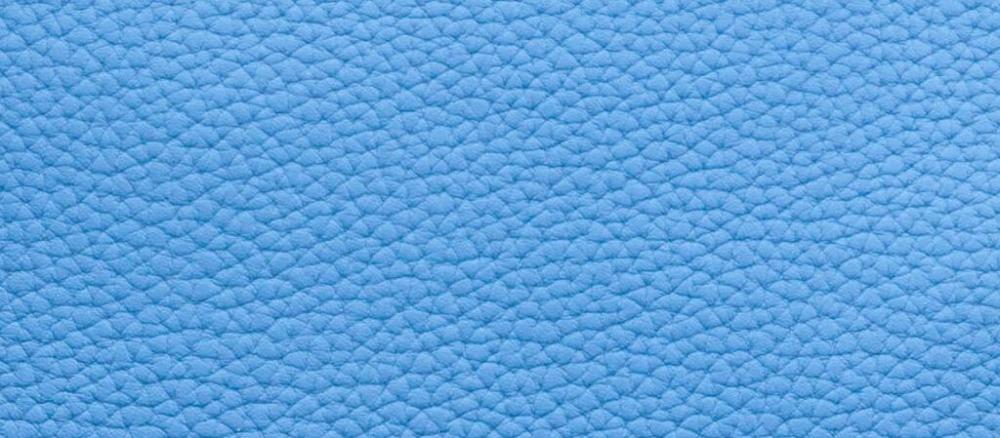
Named in tribute to the daughter of the designer who introduced it into the collections. This leather was developed for luggage and is the ultimate example of a grained leather that has been drummed. This process softens the skin and brings a generous grain to the surface. First appeared in the collections 1992. The Hermès Clemence is a highly sought-after bag known for its exceptional craftsmanship and luxurious materials. It is crafted using the exquisite Clemence leather, which is one of the finest materials in the Hermès repertoire. The Clemence leather is sourced from carefully selected hides and undergoes a meticulous tanning process to achieve its remarkable quality. It is characterized by its soft and supple texture, making it a delight to touch and hold. The natural grain of the leather adds a unique charm and depth to each bag.
Togo calfskin
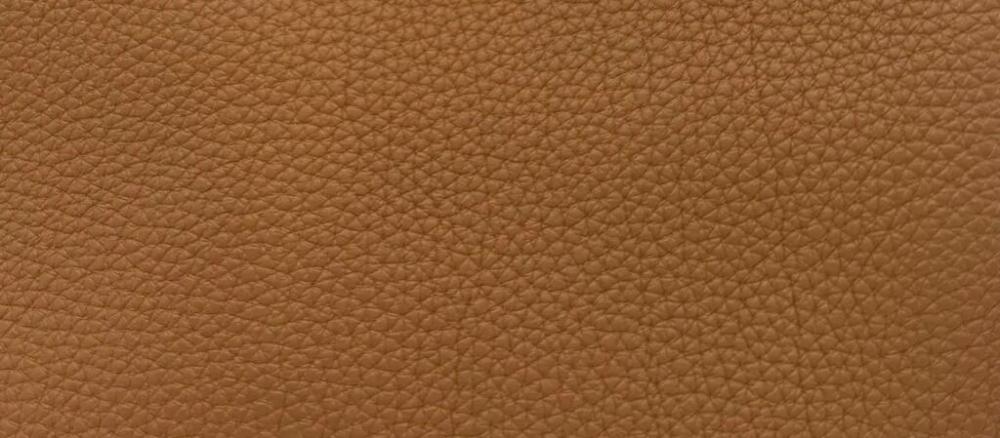
Introduced in 1997, Togo leather, the result of an intensive drumming process that brings out its natural features, owes its name to the theme of the year of its creation: Africa. It is named after an African country. Hermès Togo leather is one of the most popular Hermès leather. It is a natural pebbled grained leather with a matte finish and visible veining. Because of its texture, Togo is less likely to show scratches than many of the other leathers. It is also easy to maintain, as most spots can be removed with a damp cloth. Togo is a durable leather and is the perfect choice when you’re looking for a leather that’s easy to maintain.
Epsom calfskin

Introduced in 2004, this printed leather takes its name from a town in south-east England that is famous for its horse races. Its fine, regular grain, obtained through machine-printing, has a striking, beautifully subtle dual tone. Epsom is a heat-pressed leather with a rigid, cross-hatched fine grain and an appealing sheen. Epsom is particularly popular because it tends to show color with greater vibrancy than most other leathers.
An Hermès Epsom leather bag holds its shape over time. The embossed surface allows it to be waterproof, and less likely to show scratches. The leather is also lightweight and easy to clean, requiring just a simple swipe of a moist cloth. Epsom is often used in the manufacture of Kelly and Birkin Sellier-style bags.
Swift calfskin
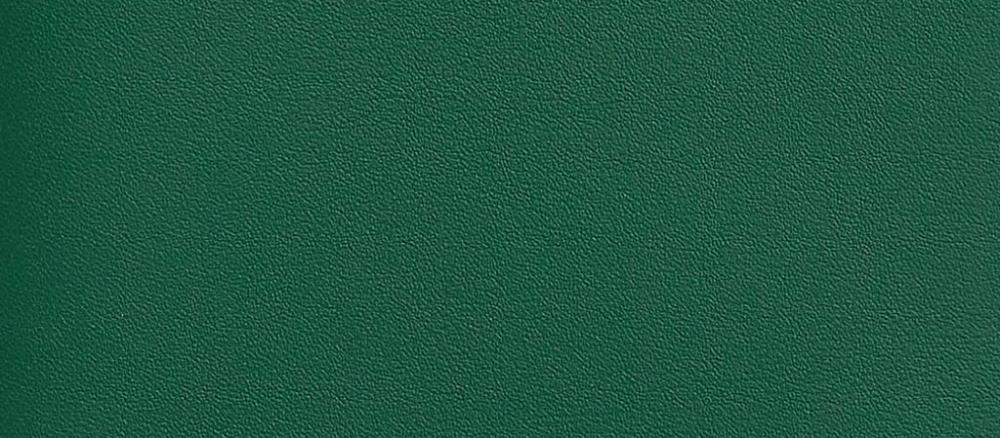
This extremely supple, sophisticated leather is named after Jonathan Swift, the author of Gulliver's Travels, to highlight its resemblance to Gulliver calfskin, which is no longer featured in today's collections.
First appeared in the collections 2004. The leather features a fine grain which is incredibly soft to touch and has the ability to reflect light while absorbing dye like few other leathers on the market. The only drawback is that it is prone to scratches, however, small scratches are easily removed by a gentle swipe of your fingers.
Box calfskin

Emblematic of Hermès, this calfskin took its name from the "Box" tanning technique that originated in England and which uses a specific skill to give the leather a particular hand and appearance, bringing the richly deep, dark hues to life.
First appeared in the collections: 1920s. Box Calf, also known as Veau Leather, is Hermès' oldest leather used in handbags. It is a fine-grain leather that develops a beautiful patina over time. Hermès Box Calf leather is particularly “boardy”, a term in leatherworking that describes leather that is stiff, holding its shape well, rather than pliable. This quality is why Box Calf leather is most commonly used in structured bags that hold their shape well, like Kelly Sellier bags. Hermès Box Calf leather has a delicate surface that is prone to scuffs and scratches and if wet, can develop blisters. However, some of these marks can be minimized when taken to an expert for reconditioning, or to the Hermès spa.
Chevre Mysore goatskin
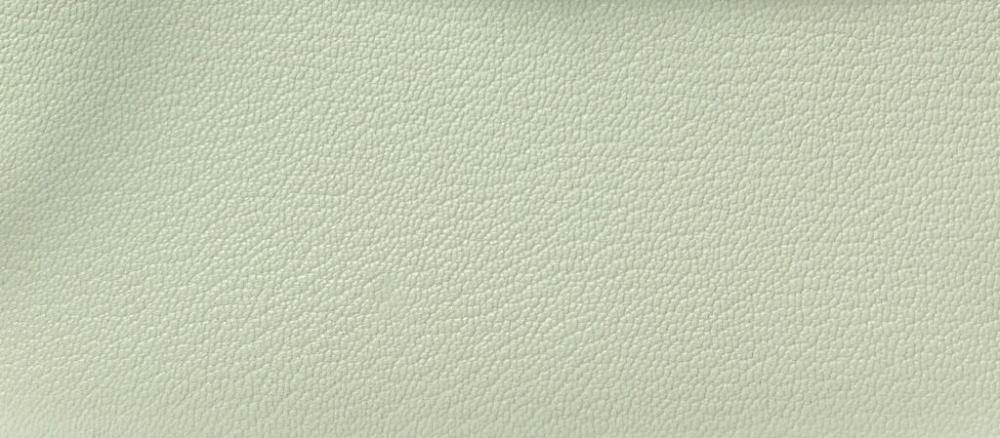
As its name – borrowed from a southern Indian town – suggests, the raw hide comes from India. It is recognizable by its unique grain, obtained through boarding. This consists of rolling the leather against itself, grain against grain, to guide the grain. This can be done in a single direction to obtain fine lines or in several different directions.
First appeared in the collections: 1990s. A more refined version of the Chevre de Coromandel, this leather is also made from goathide and completely resistant to scratches. The leather is also lightweight and easy to handle with the major difference being that the grain is more visible on the material than on the Chevre de Coromandel.
Evercolor calfskin

Complementary to Evergrain calfskin, this leather has a similar suppleness and comes in a wide palette of "forever" colors! Hermès’ Evercolor was introduced in 2012. Evercolor is a pressed leather that has a tight grain. It is soft to the touch and has a bit of a satiny sheen. It is a durable Hermès leather like other pressed leathers. Used initially to produce small leather goods, Evercolor is now a popular option for Kelly, Constance and Lindy handbags.
Negonda leather
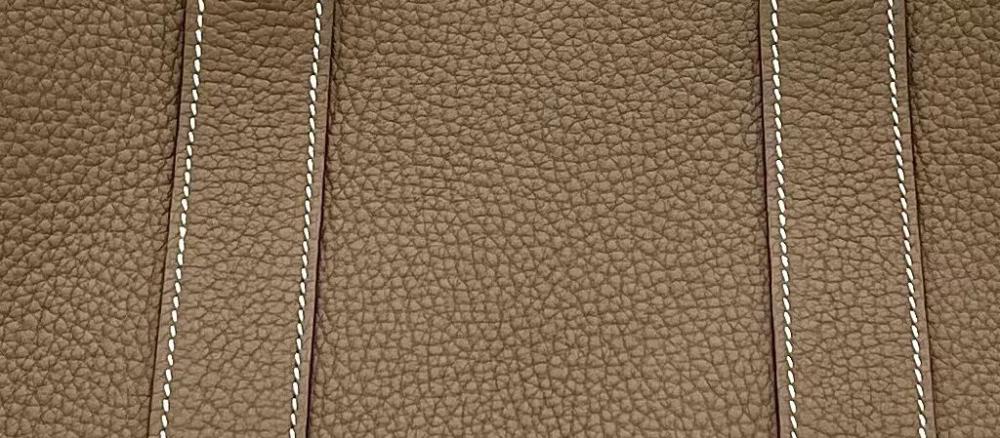
Arriving on the scene in 2007, this male calf leather is mainly developed in the Garden Party lineup. The leather is characterized by large grains and a medium hardness. Due to the difference between the Negonda and Buffle Sindhu in terms of coloring, there is also a variance in leather utilized. This is a great leather for use on bags which are going to be used quite heavily and it is tough and resistant. The specific reason for this? This matte type of leather is completely resistant to water. It could stand in pouring rain all day, become completely drenched, and still hold up without problem.
Barenia Natural leather
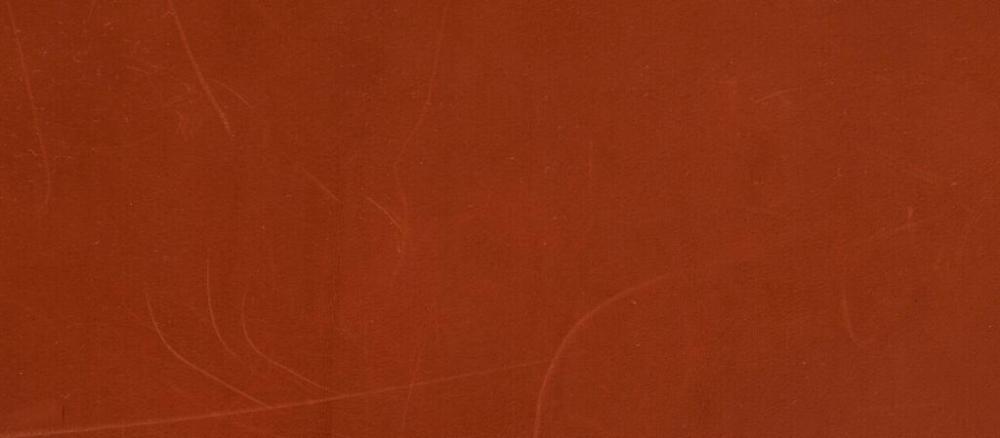
This leather was originally used for Hermès saddles and is without a doubt one of the finest leathers available. The high grade calf leather features a wonderfully smooth exterior with a hint of gloss which allows it to dazzle. It is usually mixed with a white top stitch and is completely scratch resistant due to the oil absorbing material, also making it water resistant and ideal for the rainy season. The only tiny drawback to this leather is that it develops patina over time.
Evergrain calfskin
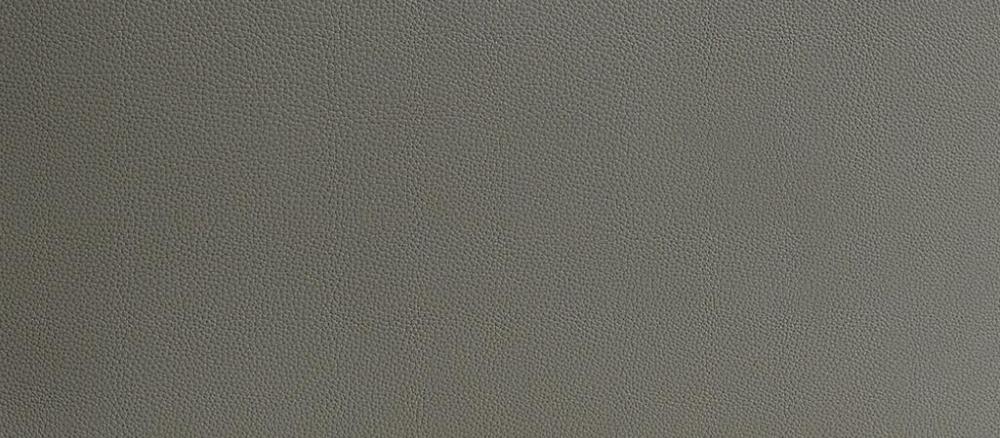
First appeared in the collections: 2004. Another embossed leather, the evergrain has one key difference – it maintains a soft and luxurious feel. Many embossed leathers can feel rough or stiff, however, the evergrain offers that smooth and soft touch that so many women love. Unfortunately, because the leather is so soft it is prone to scratches and while small scratches are easily removed with a gentle rubbing of the fingers, large scratches may have to be buffed out by a professional.
Doblis Suede calfskin
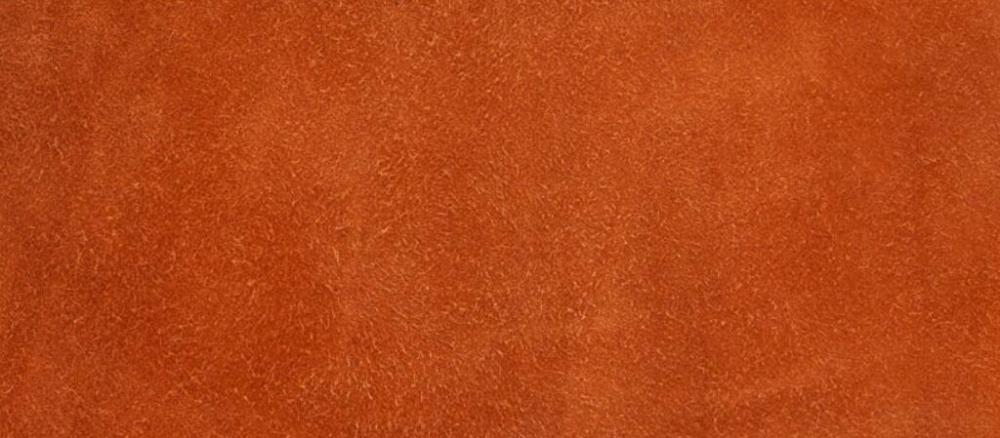
Doblis Suede is a gorgeous, velvety leather that’s incredibly soft to touch; however, it’s probably one of the most finicky leathers on the market. It must be handled with great care as this leather is prone to scratching, scuffing, dirt, grime, color fading, and all sorts of other unsightly blemishes. It cannot be taken near water and may slouch over time. Not ideal for an everyday accessory, but highly luxurious for items you’ll only use on special occasions.
Alligator Crocodile skin
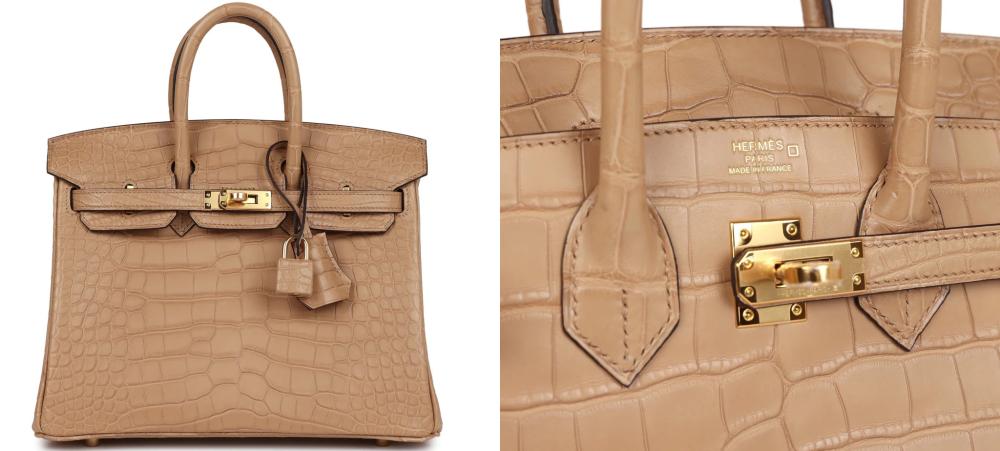
Not to be confused with crocodile, the scales of the Alligator skin Hermes uses are more patterned than that of the crocodile: alligator scales are larger, more square, and feature rougher ridges due to the toughness of the skin. Alligator pieces come in both matt and shiny (lisse) finishes. The richness of the material makes it perfect for capturing vibrant colours and dyes, emphasizing effervescent colours like bright blues and pinks. The skin is farmed from the American Alligator natively found in the Mississippi River region in Hermes's farms in Texas.
The square symbol "☐" indicates Alligator mississippiensis, or American alligator. These reptiles are sourced from freshwater farms along the Mississippi River. Known for their exceptional durability, alligator skin can last for generations with proper care.
In addition to the stamp symbol, you can identify alligator skin by looking for a prominent umbilical scar. Hermès artisans strategically cut the leather to ensure the scar is visible along the center of the bag, showcasing its authenticity. Due to the smaller size of alligators compared to crocodiles, this leather is more commonly used for smaller bags and accessories.
Crocodile Niloticus skin
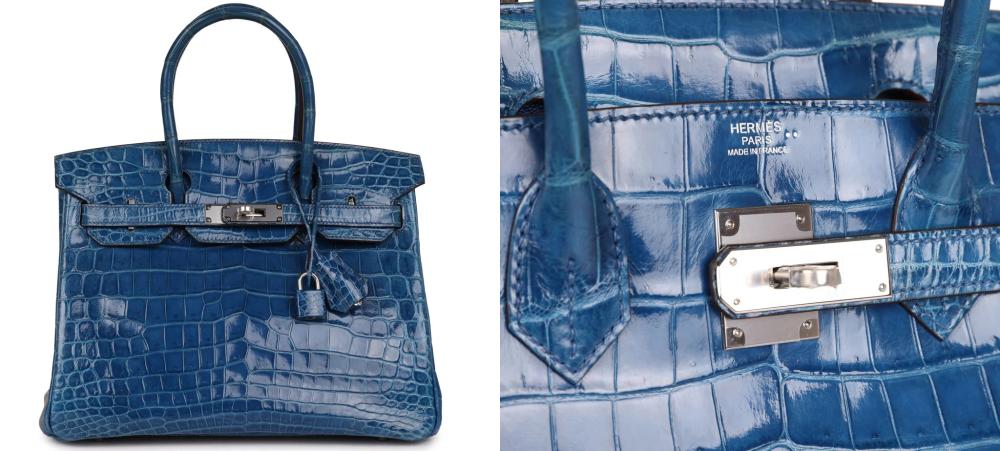
The scales on a Nilotocus skin tend to be larger and less symmetrical than those on a Porosus although, without looking at the symbol on the bag, it can be tough to spot the difference. These crocs are farmed in the River Nile in Zimbabwe, hence the name.
Niloticus crocodiles come in both matte and shiny. Its large scales look matte and, when polished, make an ideal canvas for rich colors. Although it is a more durable leather than Porosus, water stains will be permanent. Generally, Niloticus is less expensive than Porosus, but there is one exception: the Hermès Himalaya, made from matte Niloticus.
It is possible to identify your bag as being made from Niloticus skin by locating two dots symbol "••" signs somewhere on the finish near the Hermès logo. Make sure to keep this skin away from water as wet can cause permanent damage.
Crocodile Porosus skin
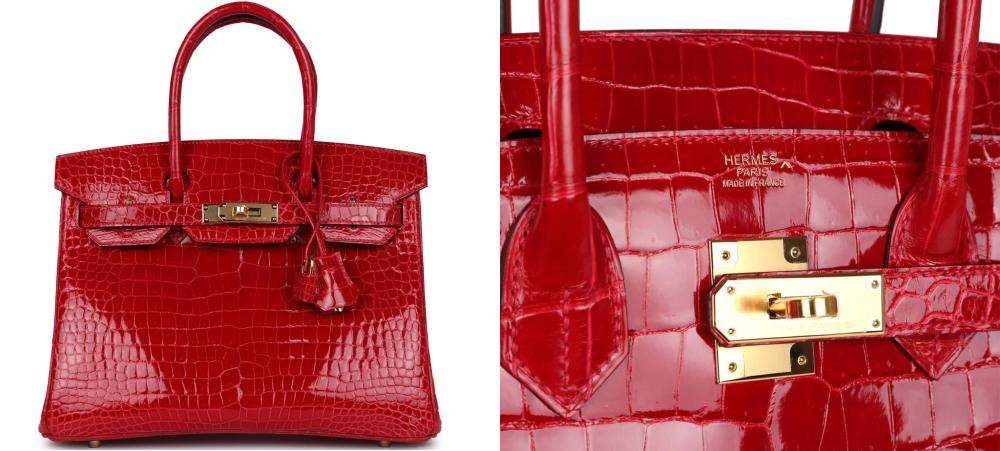
This beautiful exotic leather is considered the creme de la creme of exotic skins. It is prized for its pleasing symmetry and small, neat squares, which makes it one of the most coveted skins available. Porosus Crocodile is recognizable from the tiny pores on each scale. Hermès farms these Porosus crocodiles in Australia, using the comparatively smooth belly and flanks of the beast. The large size of these crocs makes them ideal for larger Kelly and Birkin bags. Porosus crocodiles are raised independently of each other, due to their highly territorial nature. This drives up the cost further but helps ensure flawless leather without scars.
This exotic skin comes in two varieties: Matte and Lisse (Shiny). To achieve the shiny effect, the leather receives a very careful and arduous agate stone polishing.
You can identify this skin by searching for the carat symbol "^" somewhere on the finish. Once again, keep away from water and avoid getting it wet.
Ostrich skin
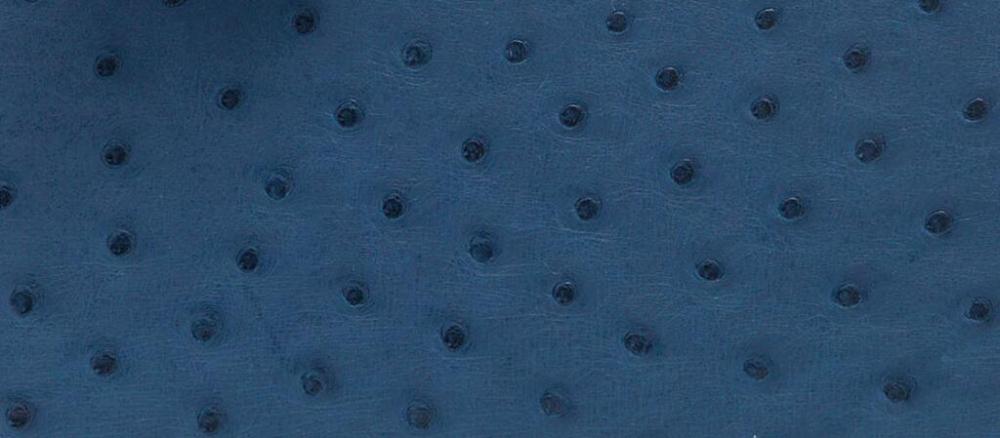
It is easy to guess what skin this leather is made of from the name, but it is the characteristics of ostrich leather skin that makes it so intriguing. The leather skin has several pores throughout and actually darkens when it comes into contact with human skin and lightens when it is exposed to light, including both sunlight and a lamp. The leather skin is extremely durable and can be wiped down if wet to maintain its appearance.
You won’t find a symbol next to your Hermès stamp for this one. The polka-dot pores across the leather, which are feather follicles, are the giveaway here. The more feather follicles there are, the more valuable the skin. The ostriches are Struthio Camelus, known as common ostriches, which are farmed in South Africa.
Lizard skin
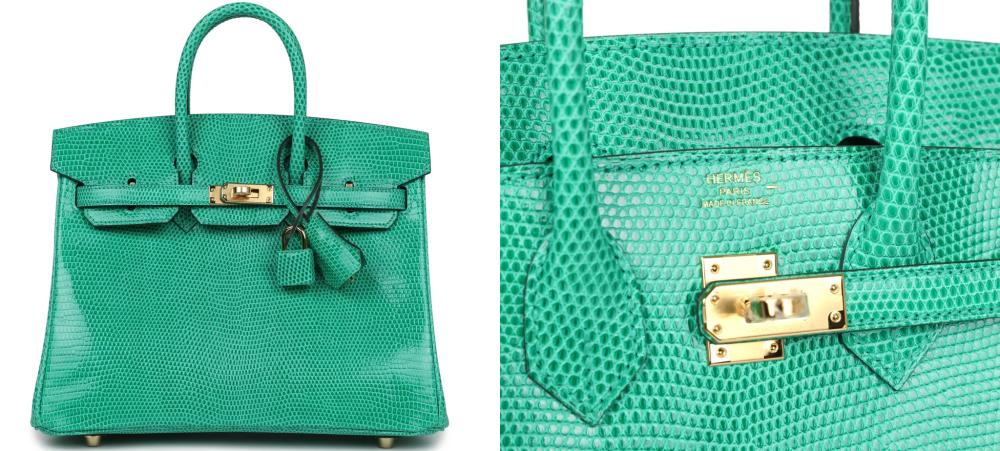
Lizard is an exotic leather with smooth scales which are polished to a gloss with agate stones. Hermès has utilized Polished Lizard since the 1920s. While it is a firm leather that is scratch-resistant and will keep its shape, it is also delicate and prone to drying out. Bright colors in Lizard are also prone to fading with prolonged exposure to light. Water should be avoided, and due to the size of the skins, Lizard is generally limited to accessories and smaller bags.
This dash symbol "-" represents Varanus niloticus lizard, also known as the Nile monitor. Found in the West African region and along the Nile, this species is one of the largest lizards in the world and the second-largest reptile in the Nile River.

